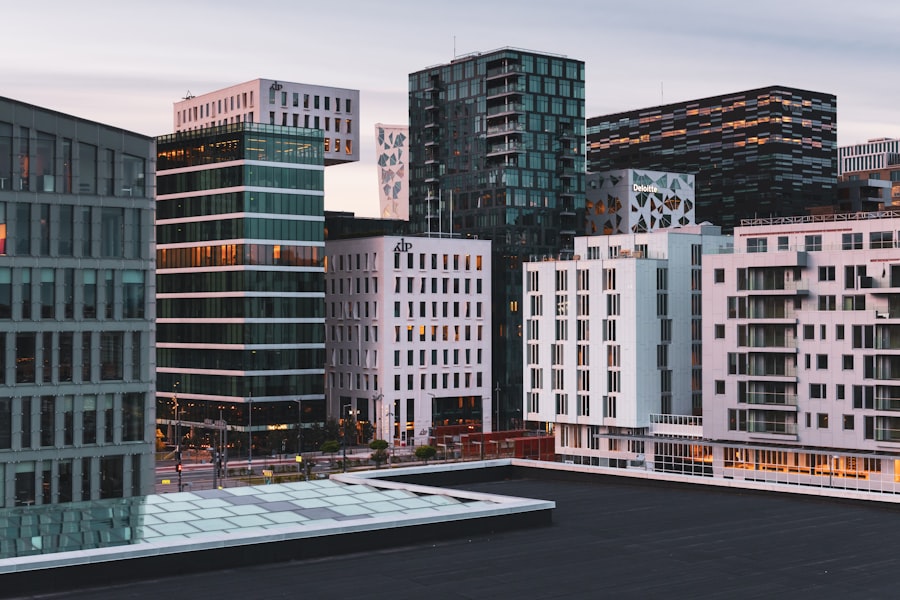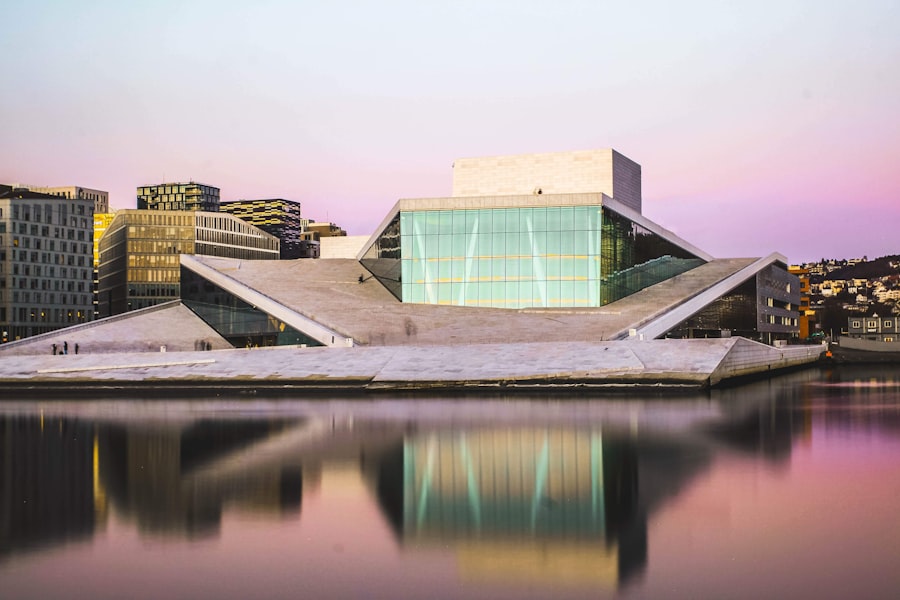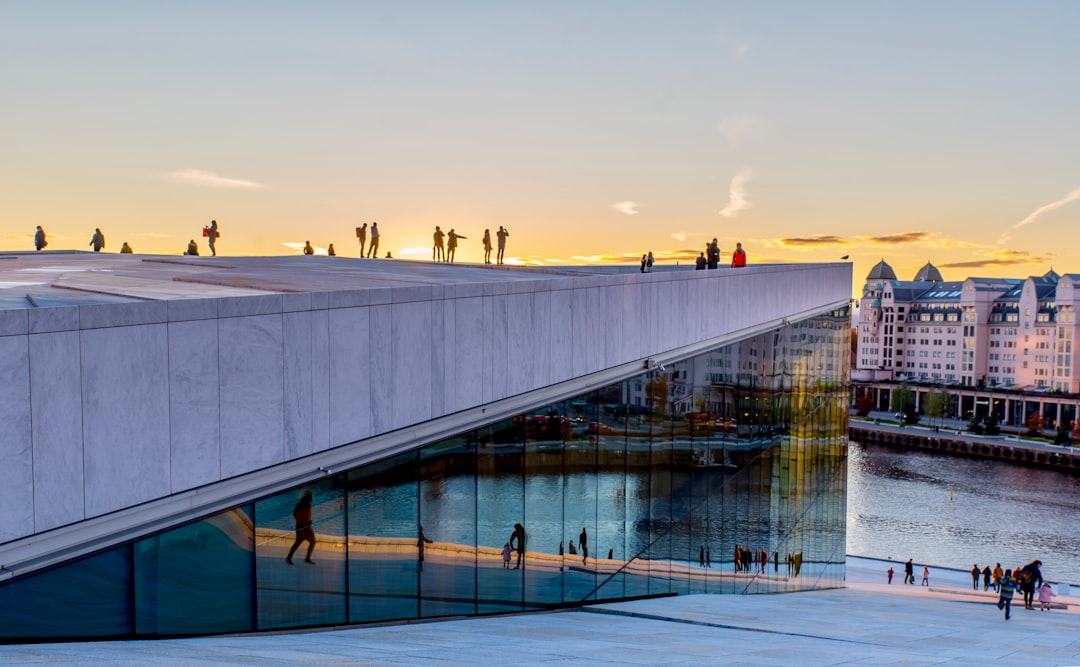Friluftsliv, a term that translates to “open-air living,” is deeply embedded in the cultural fabric of Norway. Its origins can be traced back to the 19th century, when Romanticism began to influence the way people perceived nature. The movement encouraged individuals to seek solace and inspiration in the great outdoors, leading to a burgeoning appreciation for the natural world.
This philosophy was not merely about recreation; it was a way of life that emphasised the importance of connecting with nature as a means of personal and spiritual growth. The concept of friluftsliv was popularised by figures such as playwright Henrik Ibsen and painter Edvard Munch, who both found inspiration in Norway’s breathtaking landscapes. As the country transitioned into modernity, the idea of friluftsliv evolved, becoming a cornerstone of Norwegian identity.
It is not just an activity but a philosophy that encourages individuals to embrace the outdoors, fostering a sense of belonging and community among those who partake in it. This intrinsic connection to nature has shaped the Norwegian way of life, influencing everything from social interactions to national policies. Take the first step. Book a consultation with the Norway Relocation Group for your move to Norway. https://norwayrelocation.no/one-hour-strategy-session/
Summary
- Friluftsliv, a Norwegian way of life, emphasises the importance of embracing the outdoors and connecting with nature.
- Popular outdoor activities in Norway include hiking, skiing, and camping, allowing individuals to explore the Norwegian wilderness and reap the mental and physical health benefits of friluftsliv.
- Friluftsliv plays a significant role in Norwegian education and upbringing, instilling a love for nature and sustainable living from a young age.
- The concept of “koselig” (coziness) is closely linked to friluftsliv, promoting a sense of comfort and contentment in outdoor settings.
- To incorporate friluftsliv into your own life, consider spending more time in nature, embracing the changing seasons, and adopting sustainable living practices.
Embracing the Outdoors: The Importance of Nature in Norwegian Culture
In Norway, nature is not merely a backdrop; it is an integral part of everyday life. The vast fjords, towering mountains, and expansive forests serve as both playgrounds and sanctuaries for Norwegians. This deep-rooted appreciation for the outdoors is reflected in various aspects of Norwegian culture, from traditional folk tales that celebrate the beauty of the landscape to contemporary art that captures its essence.
The connection to nature is so profound that it often transcends mere enjoyment; it becomes a source of identity and pride. Norwegians are known for their resilience and adaptability, qualities that are often nurtured through outdoor experiences. The harsh winters and rugged terrain have instilled a sense of respect for nature’s power, teaching individuals to appreciate its beauty while also recognising its challenges.
This relationship fosters a culture where outdoor activities are not just leisure pursuits but essential components of life. Whether it’s hiking in the summer or skiing in the winter, engaging with nature is seen as a vital part of maintaining physical and mental well-being.
Exploring the Norwegian Wilderness: Popular Outdoor Activities

The Norwegian wilderness offers a plethora of outdoor activities that cater to all ages and skill levels. Hiking is perhaps the most popular pastime, with trails ranging from leisurely walks to challenging treks that lead to stunning vistas. Iconic routes such as the Besseggen Ridge and the Romsdalseggen provide breathtaking views that reward those who venture into the wild.
These trails are well-marked and accessible, making them ideal for both seasoned hikers and novices alike. In addition to hiking, skiing holds a special place in Norwegian culture. With its extensive network of cross-country trails and ski resorts, Norway is a haven for winter sports enthusiasts.
The annual Holmenkollen Ski Festival showcases the country’s rich skiing heritage, drawing participants and spectators from around the globe. Other activities such as fishing, kayaking, and camping further enrich the outdoor experience, allowing individuals to immerse themselves in the natural beauty that surrounds them. Each season brings new opportunities for exploration, ensuring that there is always something to discover in Norway’s diverse landscapes.
The Mental and Physical Health Benefits of Friluftsliv
Engaging in friluftsliv offers numerous mental and physical health benefits that are increasingly recognised by researchers and health professionals alike. Spending time outdoors has been shown to reduce stress levels, improve mood, and enhance overall well-being. The simple act of being in nature can lead to increased feelings of happiness and contentment, as well as a greater sense of connection to oneself and others.
Physically, outdoor activities promote fitness and encourage an active lifestyle. Whether it’s hiking up a mountain or skiing down a slope, these activities engage various muscle groups and improve cardiovascular health. Moreover, exposure to natural light helps regulate sleep patterns and boosts vitamin D levels, contributing to better overall health.
In a world where urbanisation often leads to sedentary lifestyles, friluftsliv serves as a powerful antidote, reminding individuals of the importance of movement and connection with nature.
The Role of Friluftsliv in Norwegian Education and Upbringing
Friluftsliv is not just a personal philosophy; it is also woven into the educational framework in Norway. Schools often incorporate outdoor activities into their curricula, recognising the value of experiential learning in natural settings. Children are encouraged to explore their surroundings, fostering curiosity and a sense of adventure from an early age.
This approach not only enhances physical fitness but also cultivates important life skills such as teamwork, problem-solving, and resilience. Parents play a crucial role in instilling a love for nature in their children. Family outings to national parks or weekend camping trips are common practices that reinforce the importance of friluftsliv as a way of life.
By engaging with nature together, families create lasting memories while nurturing a deep respect for the environment. This generational transmission of values ensures that friluftsliv remains an integral part of Norwegian culture for years to come.
Sustainable Living and Environmental Consciousness in Friluftsliv

Sustainability is at the heart of friluftsliv, reflecting a profound respect for nature and an understanding of humanity’s role within it. Norwegians are acutely aware of environmental issues and strive to live in harmony with their surroundings. This consciousness is evident in various aspects of outdoor life, from responsible waste disposal during hikes to advocating for conservation efforts that protect natural habitats.
The principles of friluftsliv encourage individuals to engage with nature mindfully, promoting practices that minimise ecological impact. For instance, many Norwegians embrace the concept of “leave no trace,” ensuring that they leave natural spaces as they found them. This commitment to sustainability extends beyond personal actions; it influences national policies aimed at preserving Norway’s stunning landscapes for future generations.
By prioritising environmental stewardship within the framework of friluftsliv, Norwegians demonstrate that enjoying nature can go hand in hand with protecting it.
Friluftsliv and the Norwegian Concept of “Koselig” (Coziness)
The Norwegian concept of “koselig,” often translated as “cosiness,” plays a significant role in how friluftsliv is experienced and enjoyed. While it may seem paradoxical to associate outdoor activities with cosiness, Norwegians have mastered the art of creating warm, inviting atmospheres even amidst the rugged wilderness. Whether it’s gathering around a campfire after a long hike or enjoying hot cocoa in a mountain cabin, these moments encapsulate the essence of koselig.
This notion extends beyond physical comfort; it encompasses emotional warmth and connection with others. Friluftsliv fosters community bonds as friends and family come together to share experiences in nature. The joy derived from these shared moments enhances the overall experience, making outdoor adventures not just about individual pursuits but about building relationships and creating cherished memories.
In this way, friluftsliv becomes a celebration of both nature and human connection.
How to Embrace Friluftsliv in Your Own Life: Tips for Incorporating Nature into Your Routine
Embracing friluftsliv does not require living in Norway; anyone can incorporate elements of this philosophy into their daily lives regardless of location. Start by seeking out local parks or natural areas where you can spend time outdoors. Even short walks during lunch breaks or weekend hikes can significantly enhance your connection with nature.
Consider setting aside dedicated time each week for outdoor activities—whether it’s cycling, jogging, or simply enjoying a picnic in the park. Additionally, cultivate mindfulness during your outdoor experiences by fully immersing yourself in your surroundings. Take time to observe the details—the rustling leaves, the sound of birdsong, or the feel of grass beneath your feet.
Engaging your senses can deepen your appreciation for nature and foster a sense of peace amidst life’s busyness. By making small adjustments to your routine, you can create opportunities for friluftsliv that enrich your life and promote well-being.
Friluftsliv and the Norwegian Connection to the Seasons
Norwegians have a unique relationship with the changing seasons, each offering distinct opportunities for outdoor activities that align with friluftsliv principles. Spring heralds new beginnings as flowers bloom and wildlife awakens; it is a time for hiking and exploring lush landscapes bursting with life. Summer invites long days filled with sunshine, perfect for camping trips or kayaking along Norway’s stunning coastlines.
As autumn arrives, vibrant foliage transforms the scenery into a tapestry of colours, making it an ideal time for mushroom picking or leisurely walks through forests adorned with golden leaves. Winter brings its own magic; snow-covered landscapes create opportunities for skiing, snowshoeing, and cosy gatherings around firesides after exhilarating days spent outdoors. This cyclical connection to nature reinforces the idea that each season has its own beauty and gifts to offer those willing to embrace them.
The Influence of Friluftsliv on Norwegian Art, Literature, and Culture
Friluftsliv has profoundly influenced Norwegian art, literature, and culture throughout history. Artists have long drawn inspiration from Norway’s breathtaking landscapes—depicting mountains, fjords, and forests in their works—capturing both their beauty and their emotional resonance. Painters like Johan Christian Dahl and Nikolai Astrup celebrated nature’s grandeur through their evocative landscapes, while contemporary artists continue to explore themes related to friluftsliv.
Literature also reflects this deep connection with nature; writers such as Knut Hamsun and Sigrid Undset have woven elements of friluftsliv into their narratives, illustrating how characters interact with their environments. These artistic expressions serve not only as reflections of individual experiences but also as cultural touchstones that reinforce Norway’s identity as a nation deeply intertwined with its natural surroundings.
Preserving Friluftsliv for Future Generations: The Importance of Conservation and Outdoor Ethics
As friluftsliv continues to thrive within Norwegian culture, there is an increasing awareness of the need for conservation efforts to protect natural spaces for future generations. The principles of outdoor ethics—such as respecting wildlife habitats, minimising waste, and adhering to designated trails—are essential components of preserving these cherished landscapes. Norwegian organisations actively promote conservation initiatives aimed at safeguarding biodiversity while encouraging responsible outdoor practices among citizens and visitors alike.
By fostering an ethic of stewardship towards nature within the framework of friluftsliv, Norwegians ensure that future generations will have access to the same awe-inspiring landscapes that have shaped their identity. In conclusion, friluftsliv is more than just an outdoor activity; it is a way of life that embodies Norway’s deep-rooted connection with nature. From its historical origins to its influence on culture and education, this philosophy continues to shape how Norwegians interact with their environment while promoting sustainability and well-being.
As we look towards the future, embracing friluftsliv can inspire individuals worldwide to cultivate their own connections with nature—creating a more harmonious relationship between humanity and the natural world. For those interested in immersing themselves further into Norwegian culture while learning the language necessary to fully appreciate these experiences, consider enrolling in courses at NLS Norwegian Language School in Oslo. Their comprehensive programmes not only teach language skills but also provide insights into Norwegian traditions like friluftsliv—making it an ideal choice for anyone looking to deepen their understanding of this beautiful country while embracing its outdoor lifestyle.
Learn more about the Norwegian classes at the NLS Norwegian Language School in Oslo

